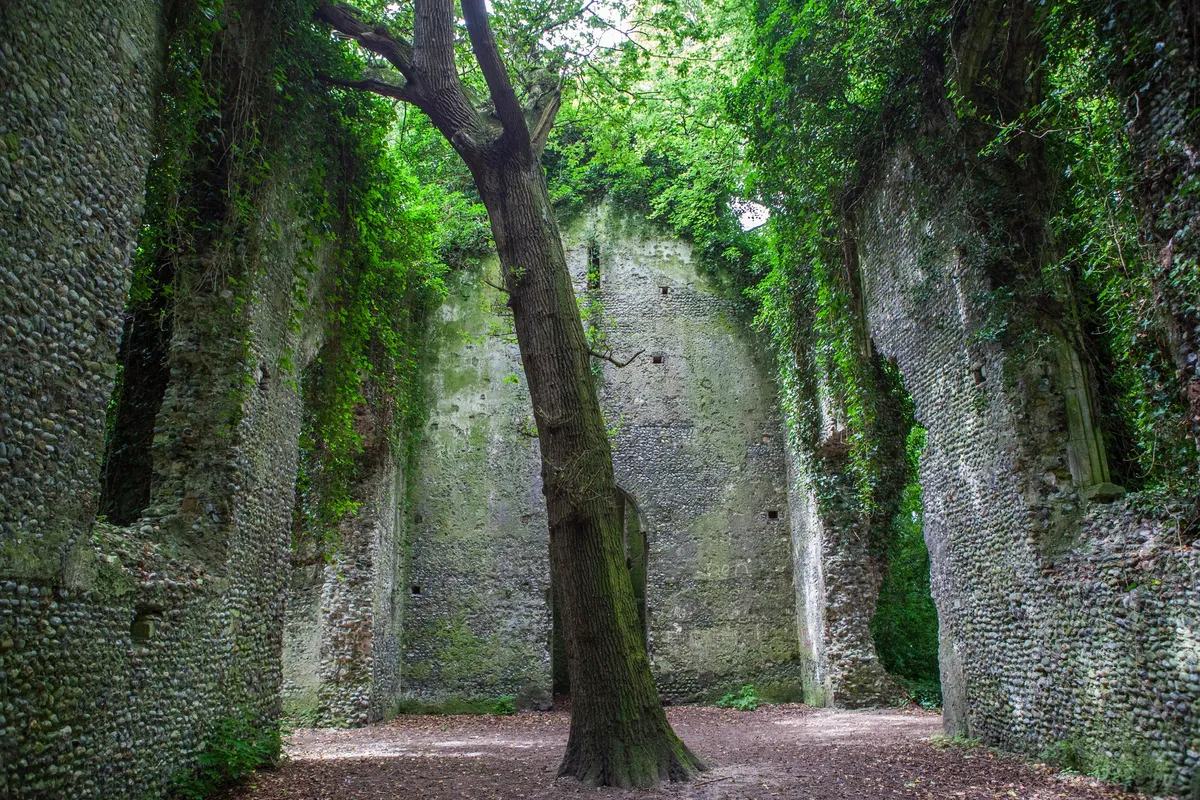The ivy-clad ruin of St Mary’s church is one of Norfolk’s best-kept secrets, tucked away in the tiny village of East Somerton between the shallow waters of Martham Broad and the coastal town of Winterton-on-Sea.
The building, which was abandoned sometime in the 17th century, is normally hidden in a wooded grove. Yet, as the autumn foliage falls to the ground, the ruined church, half-wrapped in evergreen vines, reveals itself. Only the 13th-century tower and the 15th-century nave remain – the chancel is completely missing. Enter the building through the cathedral-like arch, once the doorway to the church.

Squirrel or witch?
Birds often let out alarm calls as you explore this medieval relic, and visitorsmay get the sense that the church is no longer the domain of humans but has long since been given over to nature. Sometime ago, a squirrel must have darted in to bury an acorn in the ruined nave – today, a large oak towers up within the centre of the building. However, local legend disputes the discarded acorn theory and instead claims the tree sprouted from the wooden leg of a witch who was buried here.
It is said the church was then built around the evil woman to contain her wickedness and her ghost still haunts
its walls.

Coastal foray
The church is best visited as part of the signposted circular walk from nearby Winterton-on-Sea, where you can treat yourself to a warming drink and a cake once you’ve completed the 5.3km circuit.
The dunes at Winterton are of international importance; the gradual weathering of mollusc shells has given rise to an alkali soil that is home to flora and fauna normally only found on chalk downs.
During the late-autumn and winter months, it is not unusual to see some of Norfolk’s Atlantic grey seals nursing their pups among the dunes. Visitors are advised to give them a wide berth (10 metres or more), but even from a distance they are a joy to watch.

